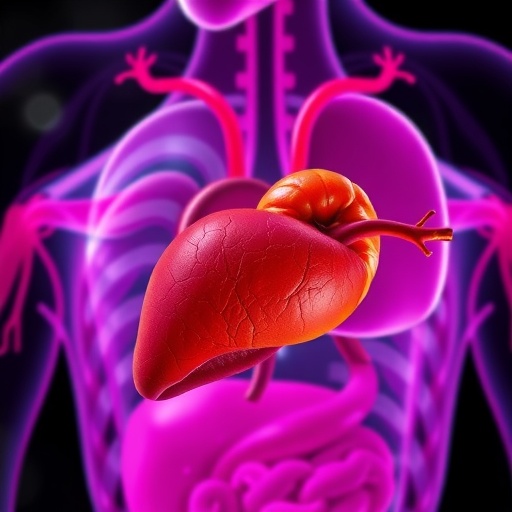
A startling resurgence of pertussis, commonly known as whooping cough, has been documented among children and adolescents in Tuscany, Italy, challenging long-held assumptions in the field of infectious disease control. Despite achieving some of the highest vaccination coverage rates in the country, a recent investigation published in Eurosurveillance reveals a dramatic ninefold increase in hospitalizations for this highly contagious respiratory illness within the pediatric population during 2024. This alarming trend underscores an urgent need to reassess not only vaccine coverage but also the timeliness of immunization schedules and booster strategies across vulnerable age groups.
Pertussis, caused by the bacterium Bordetella pertussis, is notorious for its characteristic severe coughing spells, which can lead to significant morbidity, especially in infants under one year. Traditionally, outbreaks have largely affected this youngest cohort, given their immature immune systems and partial vaccination status. However, recent epidemiological shifts in Tuscany illustrate a departure from this pattern, with more than half of the 259 hospitalized cases in 2024 occurring in adolescents aged 10 to 16 years. Infants, remarkably, accounted for only 7% of hospitalizations, posing new questions about the dynamics of pertussis transmission and immunity.
The study, conducted by Nieddu et al., undertook a rigorous retrospective analysis encompassing all pertussis-related hospital admissions in Tuscany from 2016 through early 2024. Data integration leveraged the region’s digital vaccination registry, notable for its real-time daily updates from medical providers and vaccination centers, providing granular insight into vaccination timing relative to disease onset. By examining intervals between the earliest eligible vaccination date and actual immunization, the researchers meticulously quantified “vaccination delay,” a parameter increasingly recognized as pivotal in infectious disease prevention.
Crucially, the findings reveal that while immunization coverage remains impressively high in Tuscany—97.7% of two-year-olds and 75.8% of 16-year-olds are fully vaccinated—the timing of vaccine administration diverges from optimal guidelines. Infants frequently experienced delays exceeding one month for the initial three vaccine doses, while adolescents exhibited a troubling gap often exceeding an entire year between the point of eligibility for booster doses and their manifestation of disease symptoms. These delays suggest that vaccine timeliness, not just uptake, is a critical determinant of effective population immunity against pertussis.
This phenomenon aligns with immunological principles that underscore the necessity of maintaining both robust initial immunity and timely booster reinforcements to prevent waning protection. Biological immunity conferred by childhood vaccination is known to diminish over time, particularly if adolescent boosters are postponed. The current Italian immunization framework permits administration of the adolescent pertussis booster anywhere between 12 and 18 years, reflecting a broad window that the study’s data indicate may inadvertently allow vulnerabilities to accumulate in early adolescence, a critical period for pertussis transmission.
Further compounding risk is the disturbingly low uptake of maternal pertussis vaccination during pregnancy. Among infants younger than two months—a group too young to receive their first dose—none had mothers vaccinated as recommended, despite the vaccine’s free availability nationally. Maternal vaccination has been demonstrated to confer passive immunity to newborns, markedly lowering risks of early-life pertussis. This missed opportunity for intervention reflects ongoing challenges in public health messaging and prenatal care engagement.
The distinctive epidemiological shift away from infant predominance toward adolescent hospitalizations also fuels renewed debate regarding indirect protection conferred through herd immunity. Adolescents, often socially active and highly networked, function as vectors within communities; delays in adolescent booster administration could facilitate sustained circulation of B. pertussis, ultimately increasing exposure risks even for vaccinated individuals. These insights signal that current immunization policy might benefit from adjustments emphasizing not just coverage but stricter timing adherence and possibly an earlier booster schedule.
From a public health perspective, this research underscores a multifaceted need: robust surveillance mechanisms to detect perturbations in disease patterns rapidly; targeted campaigns to counter vaccine fatigue and hesitancy especially prevalent in adolescent demographics; and precise scheduling with intentional prioritization of early dose administration. Strategies such as electronic reminders, healthcare provider counseling, and community education may enhance adherence, potentially forestalling hospitalizations and mitigating outbreaks.
This resurgence elucidates a complex interplay between vaccine-induced immunity kinetics, behavioral factors influencing timely vaccination, and bacterial epidemiology. The data-driven conclusion from Nieddu and colleagues advocates for recalibrating immunization frameworks to emphasize not merely “if” but “when” vaccination occurs, suggesting that earlier booster administration in adolescence might arrest the increasing trend. Such approaches could prove instrumental in recapturing control over pertussis transmission dynamics within well-vaccinated populations.
Moreover, this study illuminates broader themes essential to infectious disease management in the modern era: the limits of coverage-focused vaccination policies, the critical role of digital health infrastructure in monitoring compliance, and the enduring importance of maternal immunization. Collectively, these findings should galvanize policymakers, clinicians, and public health agencies to refine pertussis control strategies, ensuring both precision and agility in the continued fight against this persistent pathogen.
While the Italian context provides a focused case study, the implications resonate globally in an era where vaccine-preventable diseases remain a pressing threat. As pathogens like Bordetella pertussis adapt and immunity wanes post-vaccination, vigilance in scheduling and booster practices assumes paramount importance. This investigation serves as a poignant reminder that successful disease prevention hinges on nuanced execution as much as on high coverage rates, demanding adaptive and data-informed vaccination policies to safeguard future generations.
In conclusion, the marked increase in pertussis hospitalizations among Tuscany’s children and adolescents during 2024 spotlights an urgent need to prioritize timely vaccination alongside coverage. Adherence to the immunization schedule, proactive booster administration in early adolescence, and enhanced maternal vaccination uptake during pregnancy form the triad of strategies poised to reduce pertussis burden effectively. Implementing these measures with precision and urgency is essential to stem outbreaks, maintain community health, and achieve the long-term control of this ancient yet persistent respiratory foe.
Subject of Research: People
Article Title: Bordetella pertussis in hospitalised children and adolescents, the impact of vaccination delay, Tuscany, Italy, 2016 to 2024
News Publication Date: 28-Aug-2025
Web References: 10.2807/1560-7917.ES.2025.30.34.2500062
References: Nieddu et al., Eurosurveillance, 2025
Image Credits: Not provided
Keywords: Pertussis, Vaccination, Immunization, Children, Adolescents, Respiratory disorders, Disease prevention
Tags: adolescent health and pertussisbooster vaccination strategiesBordetella pertussis bacteriumepidemiological shifts in pertussisimmunization schedules for childreninfectious disease control challengespediatric hospitalizations for pertussispertussis resurgence in Tuscanypublic health response to pertussis outbreakvaccination coverage in Italyvaccine timeliness and effectivenesswhooping cough outbreak 2024




